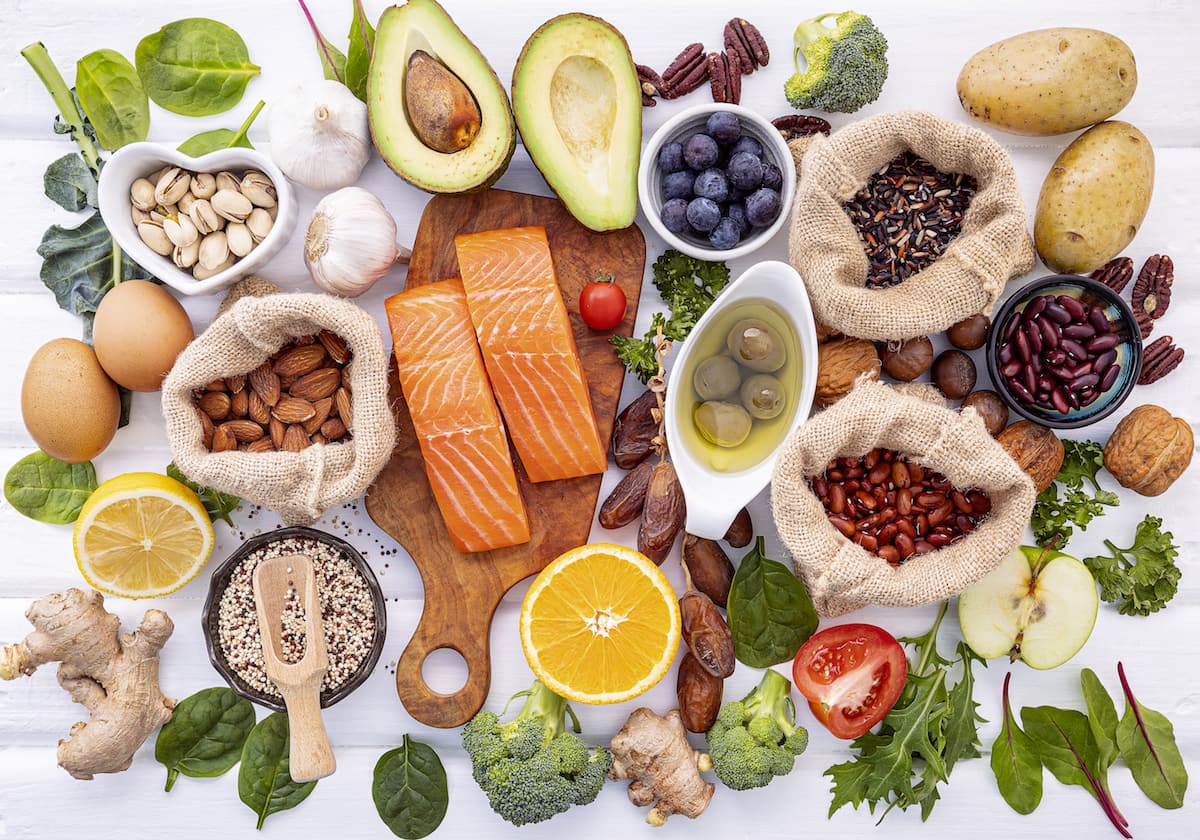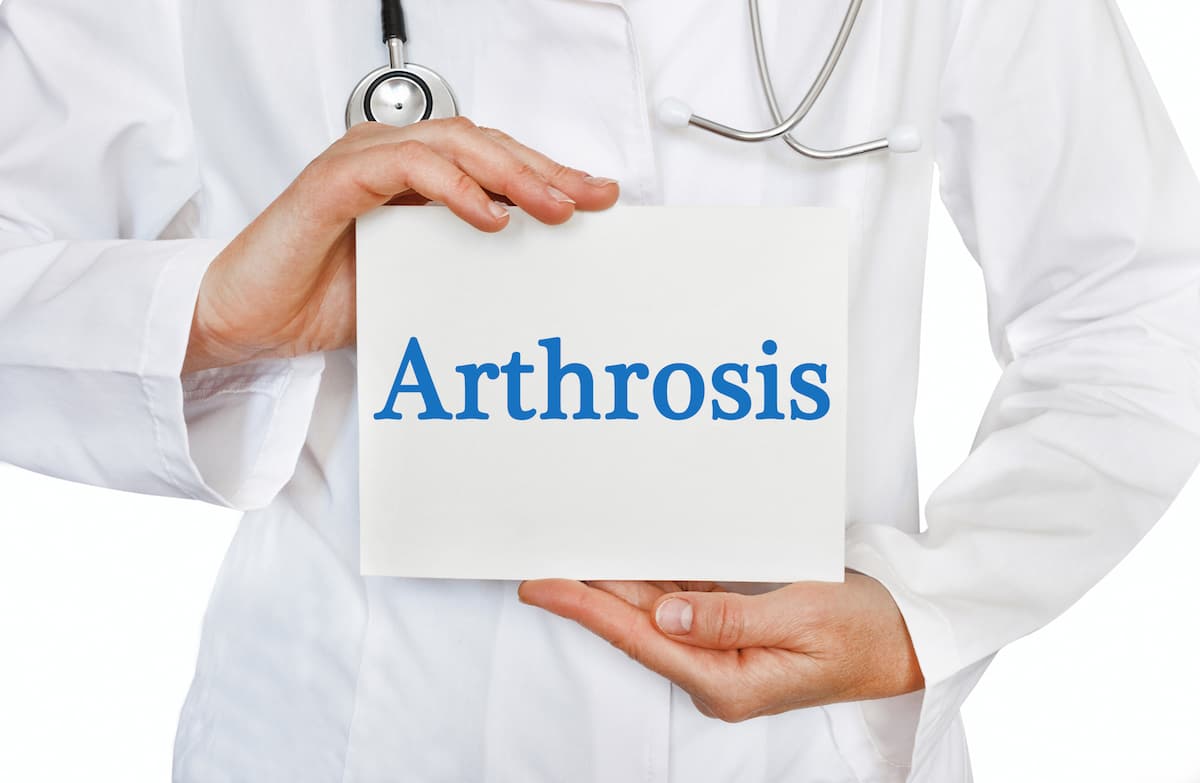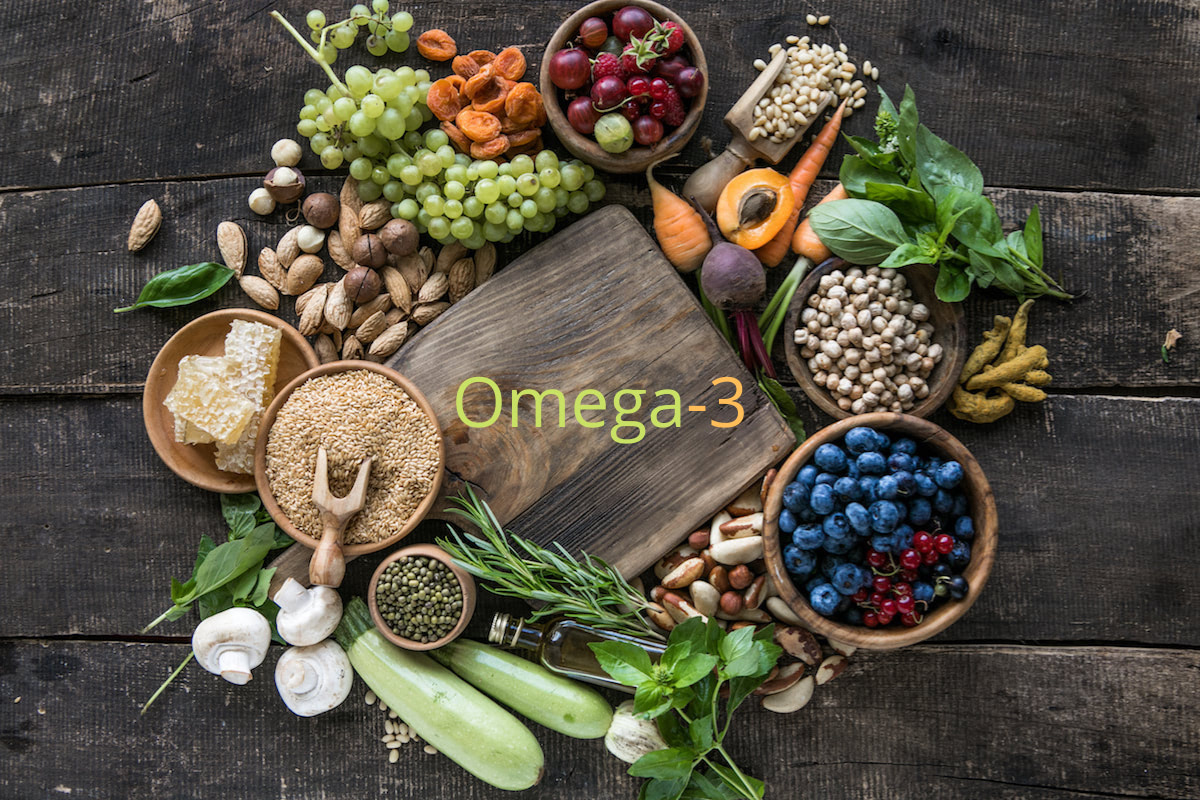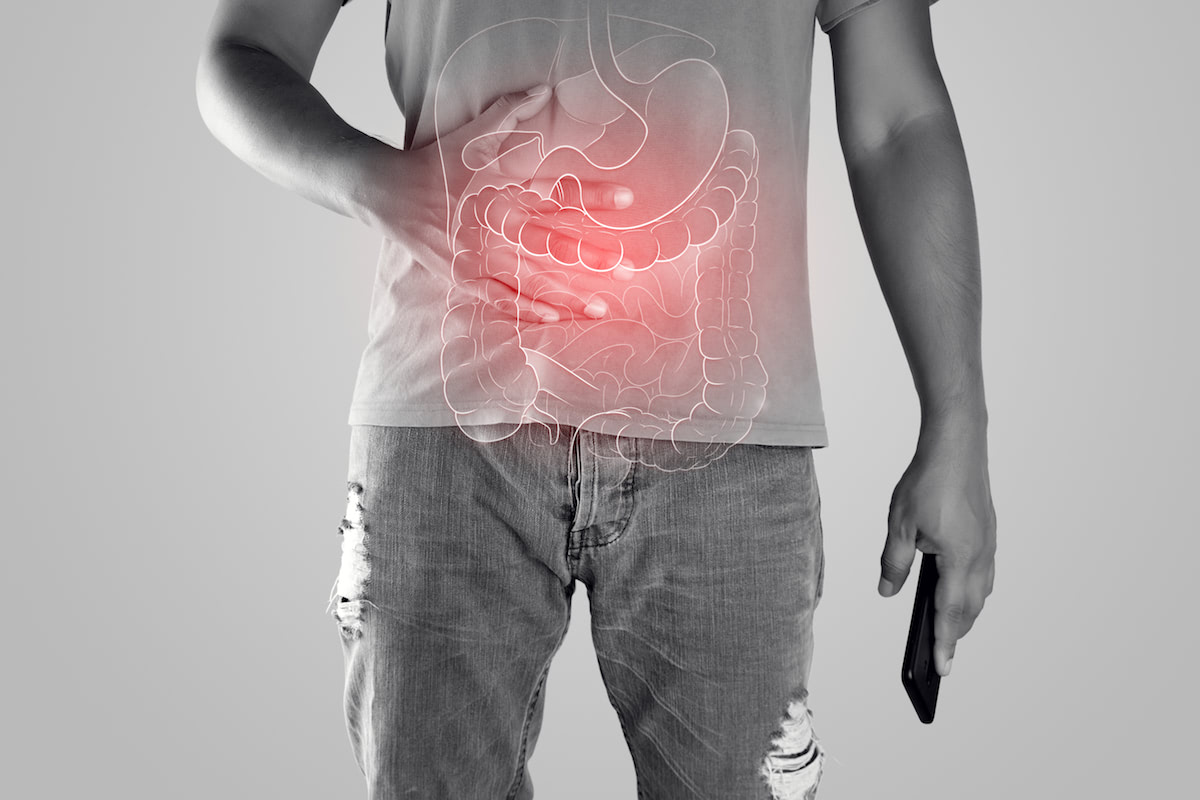Updated on 27. June 2022 from ÁYIO-Q Redaktion
Reading time: approx. 6 minutes
Scientific research points to an epidemic increase in obesity since the 1970s. In 1979, less than one per cent of the world’s population was obese. Almost 40 years later, the number had increased more than sixfold.1
Nowadays, around 108 million children and 604 million adults worldwide are considered obese, and the number is rising.2
When is one overweight or obese?
To classify body weight, the body mass index (BMI) is exclusively used. You can easily calculate the BMI yourself by dividing your weight (in kilograms) by your height (in metres) and dividing the result by height again.
Doctors and nutritionists have agreed on the following classification:
- Normal weight: BMI from 18.5 to under 25
- Overweight: BMI from 25 to under 30
- Obesity grade 1: BMI from 30 to under 35
- Obesity grade 2: BMI from 35 to under 40
- Obesity grade 3: BMI of 40 and above
Fatteners and healthy foods
Over the last five decades, people’s food habits have changed dramatically. While meals used to be cooked at home and eaten together as a family, eating out gradually became fashionable. At the same time, sugary drinks began their triumphal march around the world with Coca Cola & Co.
To meet the increasing demand, an industry has emerged that relies primarily on processed foods. In addition, physical activity among adults and children steadily declined.
Recent scientific studies have come to the following conclusions:
- Recent research consistently demonstrates the link between consumption of highly processed foods and obesity and the cardiovascular and metabolic diseases associated with it.3
- Most of the studies we analysed were able to find a link between highly processed edibles and body fat percentage in childhood and adolescence.4.
- Our findings confirm that highly processed food plays a significant role in the obesity epidemic in Brazil.5.
- Consumption of highly processed foods is linked to obesity. Canadians would benefit from reducing their consumption of processed foods and beverages and increasing their consumption of freshly prepared foods.6
- Our results support the possible role of highly processed food in the development of obesity in Australia.7
What are unprocessed, processed and highly processed foods?
In 2010, Brazilian physician and nutritionist Professor Dr Carlos A. Monteiro introduced a new food classification system (NOVA). According to this globally recognised system, food can be divided into four groups:8,9
1. Unprocessed and minimally processed foods
This includes all edible parts of plants (fruits, vegetables, seeds, leaves, roots) and animals (meat, offal, milk, eggs). Fresh mushrooms as well as water, unsweetened tea and coffee also belong to this category. The minimal degree of processing is due to processes such as washing, drying, grinding, filtering, roasting, cooking, pasteurising, cooling, freezing or vacuum packaging.
2. Processed cooking ingredients
This stage includes vegetable oils, butter, granulated sugar, salt and spices. They are obtained from foods of the first group by pressing, crushing or refining in order to have the longest possible shelf life. To refine the taste, processed cooking ingredients can be added in small quantities to the foods of the first stage.
3. Processed foods
The third group includes canned fruit, vegetables, fish (canned tuna) and animal products such as ham, bacon and smoked fish. Fresh bread, rolls and cheese also belong to the processed edibles. All products in this group have one thing in common: they have a longer shelf life due to fermentation processes, cooking or preservation methods.
4. Highly processed foods (ultra-processed foods)
Highly processed food goes through several industrial processing steps in which components of natural group 1 foods are isolated and recombined with various ingredients and additives. The best-known examples include:
- Fast food, ready meals of all kinds
- Fish fingers, frozen pizza, canned ravioli, instant soups, sausages
- Yoghurts and other desserts
- Baby food
- Carbonated soft drinks (Coca Cola), energy drinks
- Crisps, salt sticks and other salty or sweet snacks
- Sweets, chocolate, ice cream
- Packaged products such as bread, rolls, biscuits, cakes, baking mixes
- Margarine and other spreads
- Sweetened ready-to-eat mueslis
Highly processed foods can be easily recognised by the long list of preservatives, colourings, emulsifiers, sweeteners and flavour enhancers. They can be found in the form of E-numbers on the packaging.
Why do we gain weight by eating fast food and other highly processed food?
In 2019, a group of researchers from the US Department of Health and Human Services (NIH) conducted a study of 20 men, aged 31 on average, who had maintained a BMI of around 27 for a long time. Thus, they were slightly overweight.
The subjects were randomly divided into two groups: Half were given highly processed food for a fortnight (fast food group). They were allowed to eat as much of it as they wanted. The remaining study participants (control group) were given unprocessed food and could also eat to their heart’s content.
The result: After 14 days, the test persons in the fast food group gained 0.6 to 1.2 kilograms. In the control group, however, the body weight remained constant.
When the scientists compared the calorie content, they found that study participants who ate highly processed foods consumed over 3,000 kilocalories a day. In the control group, it was 400 to 600 kilocalories less.10
Why did the subjects in the fast food group consume significantly more calories? The study provides two reasons for this. On the one hand, the proportion of usable fats and carbohydrates (sugar) is greater in highly processed food than in natural food. Furthermore, the taste of fast food & co “tempted” the participants to eat larger portions.
French nutritionist Dr Anthony Fardet explains this phenomenon as follows: The more processed a food, the lower its saturation potential and, conversely, the higher the glycaemic response of the body.11
In other words, with highly processed food, the feeling of satiety sets in later and hunger returns more quickly than with minimally processed food. In addition, industrial products contain only small amounts of vitamins and minerals.
In 2015, a group of researchers at the University of Paderborn studied the effects of highly processed foods on the health of adults and children in Germany. According to the study, people who frequently consume industrial products have a poorer supply of folic acid and calcium.12
When it comes to gaining weight, it is not only the degree of processing of the food that plays a role, but also the speed of eating. If you eat your meals quickly and chew very little, you will feel full later. Several studies show that eating fast significantly increases the risk of obesity.13
What is the right way to eat?
In 2014, the Brazilian government published a nutrition guide . It is based on Professor Monteiro’s NOVA food classification system.14
- The basis of the daily diet is unprocessed and minimally processed group 1 foods.
- All meals can be refined with cooking ingredients (group 2). However, one should use as little as possible.
- You may also combine processed foods from group 3 with all foods from the first group in limited quantities.
- You should avoid eating highly processed foods (group 4).
A good example of this is the Mediterranean diet, which we have already mentioned in several articles. It consists mainly of fresh fruit and vegetables, pulses, olive oil and oily fish from the sea.
Tip: The free app nutriCARD – healthier eating rates food according to the Nutri-Score traffic light. Using the app, you can scan the barcodes of products before you buy them and get information about the nutritional values and NOVA classification.
Sources
[1] Jaacks LM et al. The Obesity Transition: Stages of the Global Epidemic. Lancet Diabetes Endocrinol. 2019 Mar;7(3):231-240.
[2] GBD 2015 Obesity Collaborators. Health Effects of Overweight and Obesity in 195 Countries over 25 Years. N Engl J Med. 2017 Jun 12; 377(1): 13–27.
[3] Poti JM et al. Ultra-processed Food Intake and Obesity: What Really Matters for Health-Processing or Nutrient Content? Curr Obes Rep. 2017 Dec;6(4):420-431.
[4] Costa CS et al. Consumption of ultra-processed foods and body fat during childhood and adolescence: a systematic review. Public Health Nutr. 2018 Jan;21(1):148-159.
[5] Louzada MLC et al. Consumption of Ultra-Processed Foods and Obesity in Brazilian Adolescents and Adults. Prev Med. 2015 Dec;81:9-15.
[6] Nardocci M et al. Consumption of ultra-processed foods and obesity in Canada. Can J Public Health. 2019 Feb;110(1):4-14.
[7] Machado PP et al. Ultra-processed food consumption and obesity in the Australian adult population. Nutr Diabetes. 2020 Dec 5;10(1):39.
[8] Monteiro CA et al. A new classification of foods based on the extent and purpose of their processing. Cad Saude Publica. 2010 Nov;26(11):2039-49.
[9] Monteiro CA et al. Ultra-processed foods, diet quality, and health using the NOVA classification system. Food and Agriculture Organization of the United Nations. Rome, 2019.
[10] Hall KD et al. Ultra-processed diets cause excess calorie intake and weight gain: an inpatient randomized controlled trial of ad libitum food intake. Cell Metabolism. 2019;30(1):226.
[11] Fardet A. Minimally processed foods are more satiating and less hyperglycemic than ultra-processed foods: A preliminary study with 98 ready-to-eat foods. Food Funct. 2016;7:2338-2346.
[12] How unhealthy are industrial foods really?, at https://www.spektrum.de, Access date 26.09.2021
[13] Slyper A. Oral Processing, Satiation and Obesity: Overview and Hypotheses. Diabetes Metab Syndr Obes. 2021 Jul 26;14:3399-3415.
[14] Food-based dietary guidelines – Brazil, at http://www.fao.org, Access date 26.09.2021
















